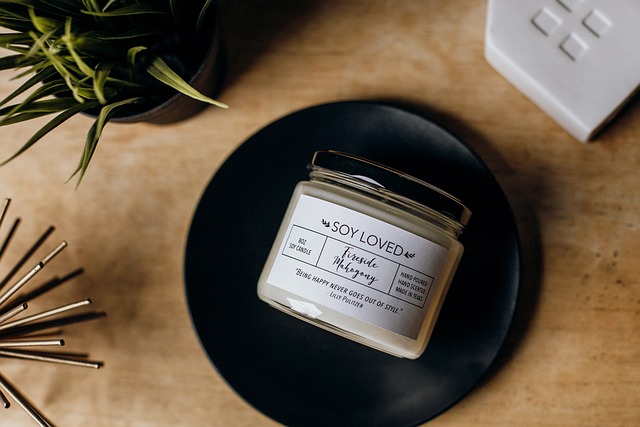
With the current state of the global economy, it has become easier than ever to promote your handmade products to international markets. Nevertheless, standing out from your competitors can be challenging without a well-implemented marketing strategy. Luckily, there are numerous successful marketing techniques available that can assist you in expanding your customer base and enhancing your sales.
In this blog post, we will talk about effective marketing strategies to promote your handmade products in international markets.
Let’s begin by taking concrete steps to grow your business overseas. We’ll cover everything from establishing a strong brand identity to utilizing social media and digital marketing. Whether you are starting from scratch or aiming to expand an existing craft business, this guide will equip you with the necessary tools for success.
Can you explain the concept of “marketing strategy”? A marketing strategy is a comprehensive plan or approach that businesses or organizations utilize to advertise their goods or services, entice customers, and ultimately accomplish their business objectives. Typically, a marketing strategy involves a thorough examination of the target market, competition, as well as the strengths and weaknesses of the organization.
The text also provides an explanation of the marketing mix, which consists of the four Ps of marketing (product, price, promotion, and place). The purpose of a marketing strategy is to enhance sales, boost brand recognition, and establish a competitive edge in the market.
1. Make your marketing content target a specific local audience.
Localizing your marketing content is a critical marketing strategy to effectively promote your handmade items in foreign markets. Localization refers to customizing your message, language, and cultural allusions to resonate with your intended audience in a specific region or country.
Not only does this process enhance your brand’s communication with customers, but it also demonstrates your understanding and appreciation of their culture. For instance, when promoting handmade items in Japan, translating your content into Japanese and incorporating visuals that resonate with Japanese consumers are imperative.
By customizing your marketing approach, you can cater to the specific preferences and behaviors of your target audience. This localization of marketing content can enhance your prospects for success in global markets and boost sales of your handmade products.
Utilize Social Media effectively by thinking methodically.
By creating a robust online presence through social media platforms, craft sellers can utilize the power of social media as an efficient marketing tactic to advertise handmade items in the global market. This approach allows them to expand their reach to a broader audience, exhibit their distinctive products, and foster connections with prospective customers.
Sellers can utilize social media to effectively market their handmade products by sharing their brand stories, showcasing product features, and highlighting customer feedback, all in a cost-effective and easily accessible manner.
By making connections with followers via social media, sellers of handmade goods can develop customer loyalty, enhance brand recognition, and bolster sales in global markets. Employing social media consistently and strategically can aid craft sellers in overcoming geographical limitations and establishing a worldwide reputation.
3. Participate in trade shows.
Participating in trade shows proves to be an extremely efficient marketing tactic for promoting handcrafted goods on a global scale. These occurrences provide a platform to showcase your merchandise to a considerable pool of potential buyers, as well as connect and interact with fellow professionals within the industry.
By attending a trade show, you can gain valuable knowledge about industry trends, market demands, and competitor strategies, which is beneficial for the learning process.
In order to optimize engagement, it is crucial to prepare in advance and allocate resources to create superior booth designs and marketing materials that effectively highlight your products. Additionally, engaging with attendees, providing product demonstrations and samples, and pursing leads can also contribute to generating interest and fostering enduring relationships with potential customers.
4. Collaborate with nearby retailers.
An effective marketing strategy to promote handmade items in the international market involves partnering with local retailers. By teaming up with a retailer in your desired country, you can utilize its current customer base and distribution network to expand your reach and attract a larger audience.
In addition to providing insight into local market trends, preferences, and regulations, this approach allows you to maximize the benefits of this strategy by finding retailers that share your brand values and have a track record of success in your target market. By establishing strong working relationships with your retail partners, you can ensure that your products receive proper representation and promotion both in physical stores and online.
The main emphasis should be placed on the quality and durability.
An extremely effective marketing strategy for promoting handmade items in international markets is to prioritize quality and durability. This is due to the growing concern among customers about the environmental impact and production conditions of the products they purchase.
By placing emphasis on the superior quality and ecological aspects of handmade items, you can attract customers who prioritize these values. Furthermore, highlighting the sustainability factor sets your product apart from mass-produced goods and showcases its distinctiveness and artistry.
It is important to communicate your commitment to quality and sustainability in your marketing materials, including product descriptions, packaging, and social media content, in order to establish a loyal customer base that appreciates these qualities.
6. Build Your Own Website
According to Jonathan Peacock, founder of Zibbet, if one aims to achieve success in selling products online, they must have a website. Having a website is essential for promoting your brand online as it provides a dedicated destination. However, it is crucial that this website is owned by you and not a marketplace store such as Etsy.
According to Peacock, driving traffic to a marketplace typically results in losing that traffic to another seller. Online marketplaces offer a wide range of options for buyers, and even if they visit your e-commerce store, they will be presented with suggestions for similar items from various sellers in the sidebar and bottom of the page.
Having your own website also offers more control.
According to Mike Khorev, growth leader at Nine Peaks Media, having your own website means you possess it as your personal asset, eliminating the need to depend on evolving third-party media channels such as social media.
An illustration of this is how social media platforms have recently experienced a decrease in the amount of free traffic they generate for businesses. Consequently, nowadays it is necessary to allocate funds towards paid advertisements. If your sole reliance is on social media, it is highly probable that you will experience a loss in traffic. [Related read: Tips on Creating a Business Website]
Having your own website and using third-party sites such as social media platforms or marketplaces are not mutually exclusive. Your website serves as your hub and home base, similar to a train station. Visitors can either take trains that depart from your website, like a link to an Etsy store, or they can take trains that arrive at the station, such as an Instagram link in your bio leading to your site.
7. Explore New and Unique Selling Avenues
By thinking innovatively about your product sales strategy, you can distinguish yourself from competitors and establish a solid foundation for ongoing prosperity.
Peacock stated that it is important for creative entrepreneurs to continuously discover fresh and distinctive avenues for selling. Although he advised against driving traffic towards a marketplace, it does not imply that a handmade business owner should not possess one.
The reason why a marketplace store is not suitable for driving traffic is actually the reason why it is valuable – potential customers are able to view your products simply because you are a part of it. Marketplaces with good reputation have their own internal traffic and this will result in more exposure for your products. Increased exposure ultimately leads to more sales. Therefore, it is highly recommended to sell on platforms like Etsy and Amazon Handmade. In fact, it is advisable to sell on as many sales channels as you can effectively manage.
He also advised not to hesitate from experimenting with various marketing channels, including social media, email marketing, blogging, and even SMS marketing, to determine the most effective approach for your business. It is important to monitor the results on each channel to identify where you gain the most attention from your intended customers.
In terms of its development, social media continuously showcases a drive to think creatively. Formerly, businesses assigned significance to Facebook as a means of marketing.
Then Instagram became the focus as sellers looked to accumulate 10,000 followers to get the “Swipe Up” feature in their business page’s story. Now sellers are looking into TikTok to gain exposure and customers. Ask yourself which platforms your customers use the most, then deploy quality content to hook their interest.
8. Use a Sales Pipeline
A sales pipeline, according to Peacock, can be visualized as a funnel and is utilized to keep track of the progress of a customer towards making a purchase.
The customer usually goes through multiple stages before making a purchase, so a sale rarely occurs during the first interaction. According to Flynn Zaiger, the CEO of digital marketing agency Online Optimism, the typical funnel progresses from awareness to consideration to a purchase decision gradually over time.
Peacock suggested the importance of outlining the different stages in the funnel and guiding customers through each stage. When it comes to marketing, instead of immediately focusing on making a sale, aim to provide value and establish relationships as you lead them towards a purchase.
9. Don’t Imitate the Marketing of Mass-Produced Products
Although both handmade and mass-produced products can utilize the same sales platforms, they cater to distinct customer bases, hence necessitating different marketing approaches.
Jonit Bookheim, sales and outreach director for Mata Traders, emphasized the inherent difference between handmade products and mass-produced items. According to Bookheim, handmade products possess a complete narrative, while mass-produced items may not. Bookheim stated that handmade products offer a genuine transparency, and it is crucial to highlight this aspect to customers.
You – yes, you! Investing your time, effort, and resources into creating something unique can be a significant advantage in selling your product. Handmade goods have an intriguing story behind them, which tends to appeal to customers, especially those engaging in handmade shopping.
Post-purchase content not only appears impressive on social media and blog posts but also creates a sense of importance for the customer, ultimately enhancing the probability of their future visit to your store or website for subsequent purchases, as stated by Zaiger.
Ultimately, the crux of the matter is that handmade products and the skilled artisans behind them possess a distinct talent that garners admiration and prompts individuals to actively show their support.
Bookheim encouraged individuals not to hesitate when it comes to enhancing their brand. According to her, the fact that someone manufactures products in their own residence does not restrict them from photographing them in a way that makes them appear as the most popular items in the market. Similarly, even if someone only produces 50 products per month, they should not shy away from approaching customers who may be interested in purchasing ten times that amount. Bookheim emphasized the importance of not only stepping out of one’s comfort zone but also surpassing it.






